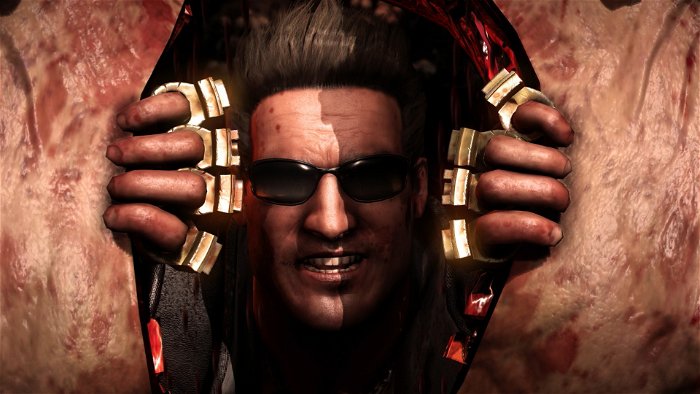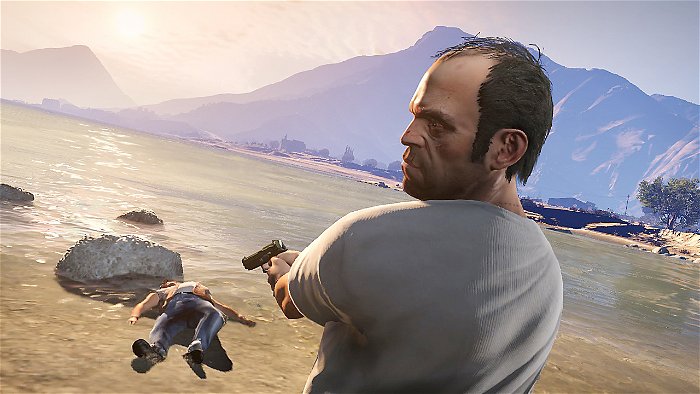In Quentin Tarantino’s Kill Bill films, the outrageously violent fight scenes tread a fine line between repulsion and humour. Within the space of a few minutes, the viewer can go from wincing at the brutality with which Uma Thurman’s The Bride takes down a foe to laughing at the ridiculousness of its hyper-stylized fights. Tarantino, often as the result of paying homage to exploitation and martial arts movies, is just as prone to depicting the kind of real physical trauma that an audience might balk at as he is to exaggerated bloodshed for the sake of a cartoon-y visual that’s difficult to find legitimately shocking. It’s this constant balancing act between funny and upsetting violence that helps set the tone of two films that are incredibly gory, but only very rarely disturbing.

Something similar occurs in videogames like NetherRealm Studios’ Mortal Kombat X. The long-running fighting series has always maintained a reputation for its extreme violence (even though the combat-ending “fatalities” that made early entries infamous look pretty tame now). Its most recent release continues in this tradition, once again bringing lovingly detailed ultraviolence to the modern fighting game. Mortal Kombat X’s finishing moves are extraordinarily gory, but, as in many of Kill Bill’s most vicious scenes, they’re funny because they’re so outrageous. Taking their violence seriously is next to impossible.
One of Jax’s fatalities sees him pushing a character’s shoulders into their sockets until their arms become tiny enough to look like little T-Rex forelimbs; a Cassie Cage finisher involves her taking a selfie with her eviscerated opponent before proudly uploading the image to her not-Facebook profile page; Johnny Cage bursts through an opponent’s chest from behind and calls out, “Here’s Johnny!” While each of these involve horrible acts we’d be disgusted by in real life, their depiction in Mortal Kombat X is so over the top that they become funny in a grotesque, feel-bad-about-laughing sort of way.

It’s interesting, then, to look at why some of the game’s fatalities miss the mark, becoming so violent that they’re just plain hard to watch. When a character’s head is bisected by a whirring saw blade (Kung Lao’s finisher), they’re slowly diced up by a rotating sword (Kenshi’s), or their throat is removed while they gurgle to death (Takeda’s); the sense of actual horror involved with this kind of violence can turn things on its head, wiping away the humour. This is likely because the lack of exaggeration can lend a sense of realism to the carnage that makes it far too easy for the audience to imagine themselves—or a real human being—being involved. Without the distance that comes with the knowledge that only digital characters are being harmed, our empathy is engaged in a way that ultimately makes us recoil.
Mortal Kombat X is so over the top that they become funny in a grotesque, feel-bad-about-laughing sort of way.
The line between funny and disgusting seems to be drawn by this distinction. When violence is presented as so over-the-top that we can’t relate to it as a real act, it not only doesn’t bother us, but may actually make us laugh. When realism enters the picture, the opposite often occurs: we become grossed-out. In Grand Theft Auto V, for example, switching the camera from a third to first-person perspective can turn the violence of a character’s rampage across the city move from funny to alarming in an instant. The extra detail and sense of immersion created by looking through the eyes of Franklin, Trevor, or Michael makes all the difference. All of a sudden, the bodies rag-dolling out from the blast radius of a detonating grenade are recognizable as people. The gun spraying bullets into a crowd becomes an extension of the player. The pedestrian flinging off the hood of a speeding car seems worryingly real. A change in camera perspective, which seems like it shouldn’t make an enormous impact on the game’s tone, can fundamentally alter the experience.

The impression this kind of violence makes is also largely dependent on the player’s own taste, of course. What some find too ridiculous to take seriously, others may be honestly upset by. While developers can’t account for every player’s potential reaction, though, they can factor the enormous impact that realism will have on depictions of violence into their design while setting the tone of their game. The difference between humour and repulsion can be difficult to identify, but, considering the prevalence of violence in the medium, it’s well worth trying to find.




